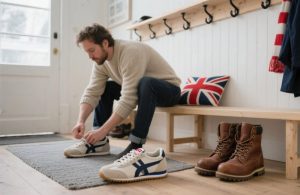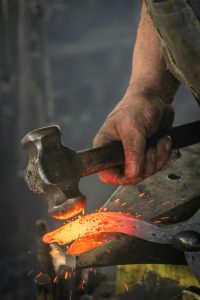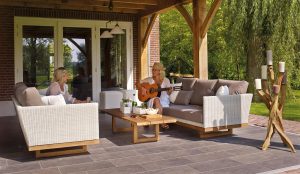Last Updated on August 21, 2025 by teamobn
Cheap sneakers can feel fine until they don’t. For DIYers, the right foundation matters. Investing in comfortable shoes can lower fatigue, reduce replacements, and keep projects moving without expensive setbacks.
Here’s how we evaluate the real price you pay: materials, construction, lifespan, and downtime. We’ll map where comfortable shoes belong, where safety boots are non‑negotiable, and how buy‑better‑buy‑less saves money.
Contents
The Importance of Footwear for DIYers and Homebuilders
Your feet are your first tools. Every step on concrete, subfloor, or compacted soil sends micro‑shocks up the kinetic chain. Over hours, poor support compounds into knee, hip, and lower‑back fatigue that steals productivity. Choosing footwear as deliberately as you choose saw blades or fasteners protects your body, and your timeline.
DIY and homebuilding days are a blend of planning, sourcing, and hands‑on tasks. Matching footwear to each mode keeps you efficient and safe. Supportive, breathable pairs excel for layout, supply runs, and administrative tasks around the shop, while certified safety boots are non-negotiable for cutting, demolition, heavy lifting, ladder work, and slick or debris-strewn surfaces.
The economics are real. Shoes that maintain cushioning, structure, and traction cut replacement frequency and downtime. They also help you avoid the hidden costs of fatigue, missteps, slips, and next‑day recovery. A buy-better-buy-less approach, one well-built lifestyle pair and one task-appropriate safety boot, often beats cycling through disposable options that never truly fit the job.
Footwear also influences build quality. When your posture is neutral and your feet aren’t barking, you measure cleaner, move more deliberately, and make better calls under pressure. Pair good choices with simple care and rotation, and your footwear becomes a quiet force multiplier, supporting the craft, not distracting from it.
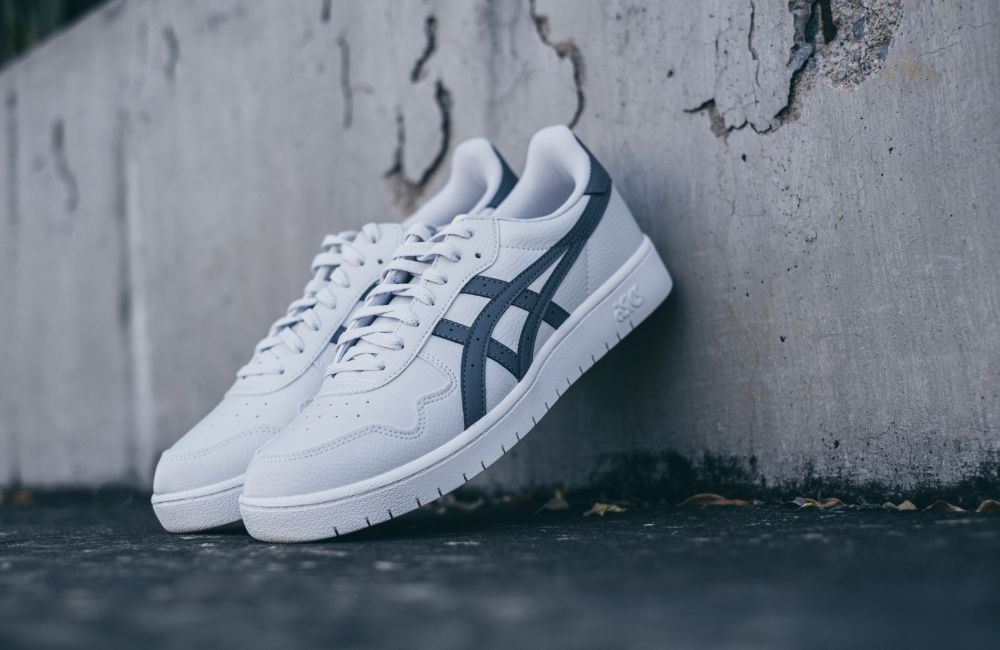
The Total Cost of Ownership for Footwear
Purchase Price vs Lifespan
Sticker price is deceptive. If a budget pair compresses quickly, you’ll replace it twice before a better‑built option gives out. When you’re shuttling between lumberyard, demo, and design desk, comfortable shoes that hold structure and cushion longer reduce spending per month of use.
Materials and Construction
Softer foams feel plush on day one, but quality midsoles rebound longer and resist packing out. Durable uppers, proper stitching, and old‑world shaping all affect fit and longevity. You feel this in fewer hotspots and more stable footing, precisely why comfortable shoes built with thoughtful construction can earn their keep.
Replacement Cycles and Waste
Fast wear means more landfill trips and more downtime. Every replacement also costs time: shopping, shipping, and returns. Slowing that cycle by buying sturdier, serviceable pairs saves money and waste. When your comfortable shoes last another season, your budget and project schedule both breathe easier.
Productivity and Recovery
Feet and lower back fatigue steal hours. A pair that supports neutral alignment shortens recovery, makes errand days easier, and keeps you fresher for the tasks that truly demand you. Comfortable shoes mitigate micro‑stress during planning, sourcing, and setup, so you can spend your “good hours” on skilled work, not commuting soreness.
Beyond the line items, comfort pays in decision quality. Project planning, measurements, and supply trips are where mistakes compound. When you’re not limping from the car to the shop, you move with purpose, stay focused on details, and avoid “good enough” calls you’ll rip out next weekend. TCO isn’t only about dollars. it’s also the quality of outcomes you get for those dollars.
Where Lifestyle Sneakers Fit, and Where They Don’t
There’s a sweet spot where heritage runners and city‑walkers shine: planning days, layout and measuring, supply runs, and light admin around the shop. In these use cases, comfortable shoes deliver cushioning and breathability without the stiffness of a jobsite boot. The trick is drawing a hard line when tasks shift from errands to exposure, impact, and heavy loads.
Tasks Suited for Heritage Sneakers
When you’re on the move but out of immediate hazard, think mapping a backyard path, picking finishes at the store, or sketching cabinet reveals, lively, supportive pairs make sense. Comfortable shoes let you rack up steps with fewer aches while staying nimble, especially across pavement, packed gravel, and shop floors where slip risks are low and no toe protection is needed.
Tasks That Require Safety Boots
Cutting sheet goods, framing, demo, handling masonry, roofing, pouring concrete, operating heavy equipment, and any task with crush, puncture, chemical, or slip risk demands certified safety footwear. Steel or composite toes, puncture‑resistant plates, ladder‑safe shanks, and proper tread can’t be replaced with lifestyle cushioning. When in doubt, wear the boot.
Even on mixed days, treat footwear like any other tool: match it to the task. Keep a clean “commute/errand pair” for vehicle time and store runs and a job‑ready boot for when you step onto sharp debris, wet surfaces, or under suspended loads. Segregating pairs keeps interiors cleaner and makes the switch frictionless. Your future ankles, arches, and schedule will thank you.
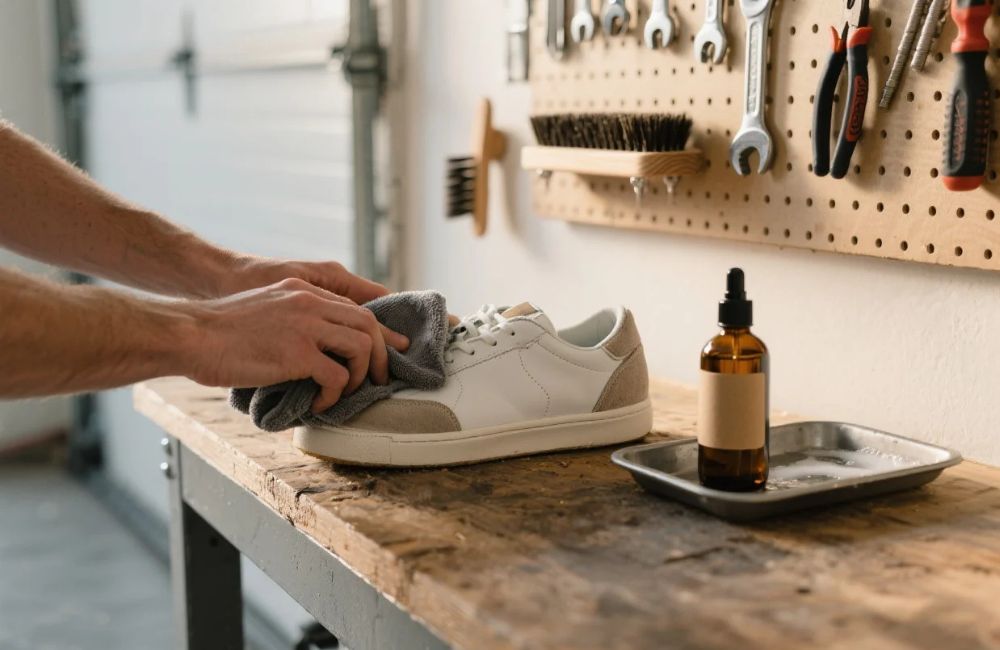
Walsh as a Case Study: Buy Better, Buy Less
Norman Walsh pairs design heritage with craft techniques that favor fit, shape retention, and repairability. Traits that matter for real-life, between-task wear. For those commute, layout, and supply phases, comfortable shoes with supportive midsoles and well‑cut uppers can be the difference between cruising through the afternoon or calling it early.
Hand‑lasting and Quality Control
Walsh emphasizes hand‑lasting, a traditional method that shapes the upper to the last by hand. That yields a more precise, foot-hugging form, fewer rubbing points, and better long-term structure. For DIYers, that translates to a more stable platform on long walk days and a fit that holds its shape rather than collapsing after a month of errands.
Uk and China Production Transparency
According to their own news posts, Walsh produces in the UK and China, while maintaining consistent standards and being transparent about origins. That transparency is instructive for owner‑builders vetting their own materials and suppliers: clarity builds trust. Knowing where and how something is made helps you buy once, with confidence, instead of twice with regret.
Care and Maintenance Routines
Even solid builds need simple care to go the distance. A small shoe‑care station in your garage, brush, drip tray, mild cleaner, adds seasons to your pairs. Rotating insoles, airing after wet days, and wiping grit off outsoles reduce wear. When you treat comfortable shoes like gear worth maintaining, they respond with longer, better service.
A final note on scope: Walsh’s heritage sneakers, London and Ensign lines, and other city‑walk silhouettes are ideal for the “in‑between” of a builder’s life, planning, sourcing, and everyday movement. They are not substitutes for certified safety boots in hazardous environments. The ‘buy better, buy less’ mindset means equipping yourself with the right two lanes: a durable boot for risk and a supportive lifestyle pair for everything else.

Practical Buying Checklist for Diyers
Your ideal pair depends on how you actually spend time: commuting, sourcing, planning, and then hands‑on tasks with real hazards. Fit, support, traction, and protection all matter, just in different proportions, so evaluate both a lifestyle pair and a certified work boot.
- Try on when your feet are slightly swollen from a normal day. Bring the socks you actually wear and any insoles or orthotics. Walk ramps and stairs to check heel hold, toe room, and forefoot flex.
Check midsole feel and rebound. You want cushioning that compresses under load but springs back, not a pillow that packs out in a week. Light torsional stiffness helps resist fatigue on long errand days. - Assess upper materials and cut. Breathable textiles or perforated leather keep you cooler. Padded collars reduce hot spots. A well‑shaped last hugs without pinching, reducing friction on long walks.
- Inspect the outsole grip for optimal traction on various surfaces. Fine siping for wet pavements, multi‑directional lugs for gravel and yard paths, and non‑marking rubber if you’re on finished floors or gym coatings.
- Do a forefoot flex test at your natural toe‑off point. The bend should align with your metatarsals, not behind them. Excess stiffness can strain calves. too floppy can feel unstable.
- For boots, verify certifications relevant to your tasks. Look for standards such as EN ISO 20345 or ASTM F2413, which match the toe cap, puncture plate, shank, and slip resistance to your specific environment.
- Mind weight and balance. Lighter isn’t always better if it sacrifices stability, but unnecessary heft adds up over a full day of movement. Aim for a secure, centered feel underfoot.
- Consider width options and adjustability. True wide sizes, longer laces, and well‑placed eyelets make it easier to dial fit and accommodate swelling during hot or long days.
- Plan for seasonality. A breathable pair for summer and a water‑resistant option for shoulder seasons cover most non‑hazard days. keep insulated, certified boots for winter jobsite work.
- Inspect return and exchange policies before you commit. A generous window lets you test fit around the house and on clean surfaces, catching issues before soles show wear.
- Set up basic care to extend life. Use a brush and mild cleaner, air‑dry with paper or shoe trees (no direct heat), and rotate pairs so foam has time to rebound between wears.
Conclusion
Comfort is not a luxury for people who build. It’s a cost control strategy. When you split duties between hazard zones and everyday movement, equipping both lanes correctly pays dividends. Heritage craft and transparency make it easier to buy once and buy right. A small care routine multiplies those gains over time. Your feet, your focus, and your budget all benefit.For a place to store your shoes, check out our article on the various shoe storage solutions!

